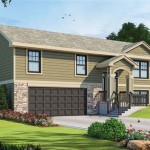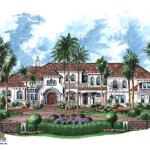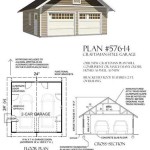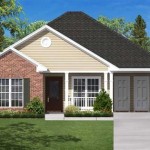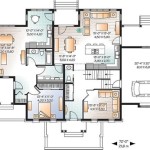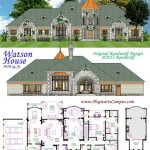Exploring the Versatility of 2-Story Townhouse Floor Plans
Two-story townhouses offer a compelling blend of affordability, space efficiency, and community living, making them a popular choice for first-time homebuyers, growing families, and those seeking a low-maintenance lifestyle. The floor plans of these residences are crucial in determining their functionality, aesthetic appeal, and overall suitability for different lifestyles. This article delves into the intricacies of 2-story townhouse floor plans, exploring common layouts, key design considerations, and the benefits they offer.
A 2-story townhouse, by definition, distributes living space across two levels. This vertical orientation allows for a smaller footprint, making them ideal for urban and suburban environments where land is at a premium. The separation of living areas from sleeping quarters is a fundamental advantage, promoting privacy and creating distinct zones within the home. Common areas like the living room, kitchen, and dining area are typically located on the first floor, while bedrooms and bathrooms are situated on the second floor.
The arrangement of rooms, the size of each space, and the presence of features such as balconies, patios, and attached garages all contribute to the overall functionality and desirability of a 2-story townhouse. Understanding the various floor plan options and the factors that influence their design is essential for making an informed decision when buying, renting, or even building a townhouse.
Optimizing Space and Functionality on the First Floor
The first floor of a 2-story townhouse is typically designed as the primary living space, encompassing the areas used for entertaining, cooking, and daily activities. The layout of this floor significantly impacts the flow of movement and the overall atmosphere of the home. Several common floor plan configurations exist, each with its own advantages and drawbacks.
One popular layout features an open-concept design, where the living room, dining area, and kitchen flow seamlessly into one another. This creates a spacious and airy feel, ideal for socializing and maximizing natural light. Open-concept designs often incorporate a kitchen island or breakfast bar, providing additional seating and counter space. While this layout enhances social interaction, it may lack distinct zones, potentially leading to noise and clutter issues.
Alternatively, some floor plans incorporate a more traditional layout, with separate rooms for the living room, dining area, and kitchen. This provides greater privacy and allows for more defined spaces, which can be advantageous for families with different needs and activities. Separate rooms can also be easier to decorate and maintain a sense of order. However, this layout may feel more enclosed and less conducive to socializing.
Another crucial element of the first-floor design is the placement of the entryway. A well-designed entryway should provide a clear transition from the outside world to the interior of the home. It should also include adequate storage for coats, shoes, and other belongings. A poorly designed entryway can create clutter and make the home feel smaller and less inviting.
The location of the powder room (a half-bathroom with a toilet and sink) is also a critical consideration. It is typically located on the first floor for easy access by guests and residents. The powder room should be discreetly placed, ideally near the entryway or living area, and should be adequately ventilated.
Finally, many 2-story townhouses include an attached garage. The access point from the garage into the main living space should be carefully considered. A mudroom or small entryway can provide a buffer zone, preventing dirt and debris from being tracked into the house. Direct access from the garage to the kitchen can also be convenient for carrying groceries.
Designing Comfortable and Private Second-Floor Living
The second floor of a 2-story townhouse is primarily dedicated to sleeping quarters and private spaces. The number of bedrooms, the size of the bathrooms, and the inclusion of features such as walk-in closets and en-suite bathrooms all contribute to the comfort and functionality of this level.
The master bedroom is typically the largest and most luxurious room on the second floor. It should include a comfortable sleeping area, ample closet space, and ideally an en-suite bathroom. The size of the master bathroom can vary, from a basic shower and toilet to a more elaborate space with a soaking tub, separate shower, and double vanity. The location of the master bedroom within the floor plan can also impact its privacy. Placing it at the end of the hall or away from other bedrooms can minimize noise and disturbance.
The remaining bedrooms are typically smaller than the master bedroom and may share a common bathroom. The number of bedrooms will depend on the overall size of the townhouse and the needs of the occupants. It is important to consider the size and layout of each bedroom to ensure that it provides adequate space for sleeping, studying, and storage.
The common bathroom should be conveniently located near the bedrooms and should include a toilet, sink, and either a shower or a bathtub. The size of the common bathroom can vary, but it should be large enough to comfortably accommodate multiple users. Adequate ventilation is essential to prevent moisture buildup and mold growth.
In addition to bedrooms and bathrooms, the second floor may also include other spaces such as a laundry room, a linen closet, or a small office. The location of the laundry room is a matter of personal preference. Some homeowners prefer it on the second floor for convenience, while others prefer it on the first floor or in the basement to minimize noise and vibration.
The staircase connecting the first and second floors is also an important element of the overall design. The staircase should be wide enough to comfortably accommodate two people passing each other, and it should be well-lit to prevent accidents. The style of the staircase can also contribute to the aesthetic appeal of the home. A grand staircase can create a sense of elegance, while a more simple staircase can be more functional and space-saving.
Key Considerations for Choosing the Right Floor Plan
Selecting the ideal 2-story townhouse floor plan requires careful consideration of several factors, including lifestyle, budget, and future needs. Understanding these considerations is crucial for making an informed decision and choosing a home that will meet your needs for years to come.
Lifestyle:
The floor plan should align with your lifestyle and daily routines. If you enjoy entertaining, an open-concept first floor with a large kitchen and dining area may be ideal. If you value privacy and prefer separate spaces, a more traditional layout with distinct rooms may be a better choice. Consider how you will use each space and how the floor plan will facilitate your daily activities.Budget:
The size and features of the townhouse will directly impact its price. Larger townhouses with more bedrooms, bathrooms, and luxury amenities will typically be more expensive. It is important to establish a budget and stick to it. Consider what features are essential and which ones you can live without. Remember to factor in ongoing costs such as property taxes, homeowner's association fees, and utilities.Future Needs:
Consider your future needs and how the floor plan will accommodate them. If you plan to start a family, you will need a townhouse with enough bedrooms and bathrooms. If you anticipate working from home, you will need a dedicated office space. If you have elderly parents or relatives who may need to live with you, you will need a townhouse with accessibility features such as a first-floor bedroom and bathroom. Planning for the future can help you avoid the need to move in a few years.Location and Community:
The location of the townhouse and the quality of the community are also important factors to consider. Choose a location that is convenient to your work, school, and other amenities. Look for a community that is well-maintained and provides a safe and friendly environment. Consider the proximity to parks, schools, shopping centers, and public transportation.Resale Value:
Consider the resale value of the townhouse. Choosing a floor plan that is popular and desirable can help you sell the home quickly and for a good price in the future. Look for features that are in demand, such as an open-concept first floor, a master suite with an en-suite bathroom, and a private backyard or patio. A well-maintained and updated townhouse will also be more attractive to potential buyers.In conclusion, navigating the world of 2-story townhouse floor plans requires careful evaluation of individual needs and preferences. By understanding the common layouts, key design considerations, and the factors that influence their suitability, prospective homeowners can make informed decisions, ultimately selecting a residence that enhances their lifestyle and provides lasting value. The process of choosing a floor plan can be complex, but with thorough research and careful planning, finding the perfect 2-story townhouse is an attainable goal.

Two Story Townhouse Floor Plans Narrow

Lisbon 2 Story House Plans In Houston Tx Sandcastle Homes

Pin Page

23 Surprisingly 3 Story Townhouse Floor Plans Architecture

Traditional Townhouse 2 Bedrm 1223 Sq Ft Per Unit 124 1158

Unique Two Story House Plan Floor Plans For Large 2 Homes Desi

Two Y Home Floor Plans Virtue Homes Award Winning Builders

Custom 2 Story Houses New Two Home Plans Housing Development D

Two Story House Plans Stockton Design

Two Story Home Floor Plan
See Also

